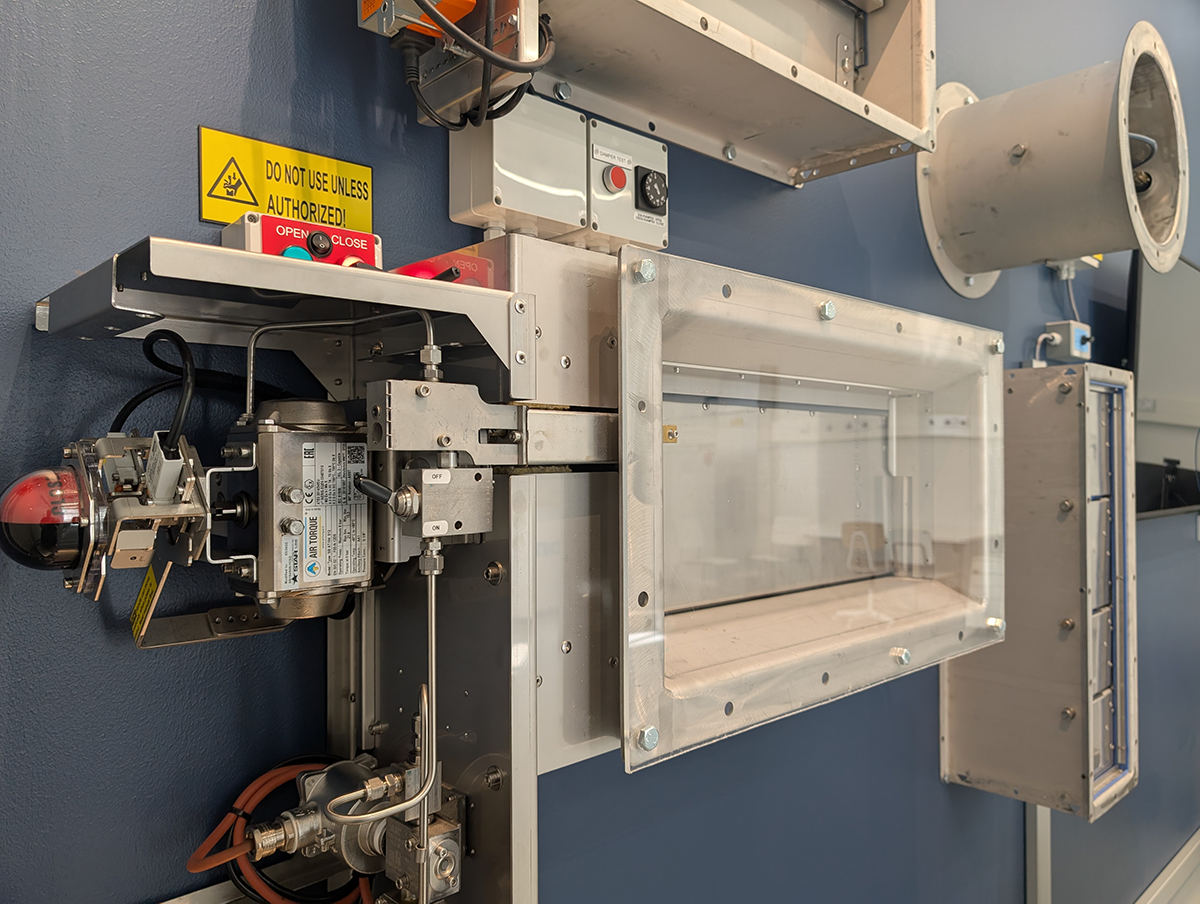Fire Dampers are used in air transfer openings, ducts and other places where fire rated structures (e.g. walls, floors or other fire barriers) are penetrated. If these openings wouldn’t be protected, the fire would easily spread to other spaces and damage the property and pose a danger to people working/being in this environment. The idea of compartmentation is to keep the fire in the start point and prevent it from spreading to other locations. This helps to limit & extinguish the fire and minimize the total damages to the facility and environment.
Fire itself is not the only threat in fire related accidents. Smoke and other gases released in the fire can pose a great danger to people especially in environments where different chemicals are being produced or stored. These gases spread fast and depending on the substance, even small doses can be extremely dangerous or fatal to people. Special seals can be used in fire dampers to obtain gas tightness to stop these harmful gases from spreading in addition to fire protection.
Operation of fire dampers
The operation of fire dampers is simple: they close when the temperature in the room or space rises over the threshold limit to prevent the fire from spreading. Halton fire dampers have fusible link, which is selected according to desired temperature. Once this temperature is reached, damper closes.
The damper itself can be electrically actuated, pneumatic or manually set. In electric and pneumatic actuated dampers, fusible link releases and cuts off operating voltage to the spring return motor, allowing the spring to close the damper blades. The fire damper opens automatically when the fuse has been changed and the operating voltage to the motor is re-established. In spring operated dampers, fusible link releases allowing the spring to close the damper blades. When the fuse has been changed, the fire damper must be reset into open position manually.
Components for fire dampers
There are wide range of different components and parts available to ensure compliance with project specification, environment and requirements. Although the basic operation of the fire damper will remain the same, Halton R&D team is working to find innovative solutions to support the systems where fire protection plays essential role.
View Halton fire damper selection for different environments.


